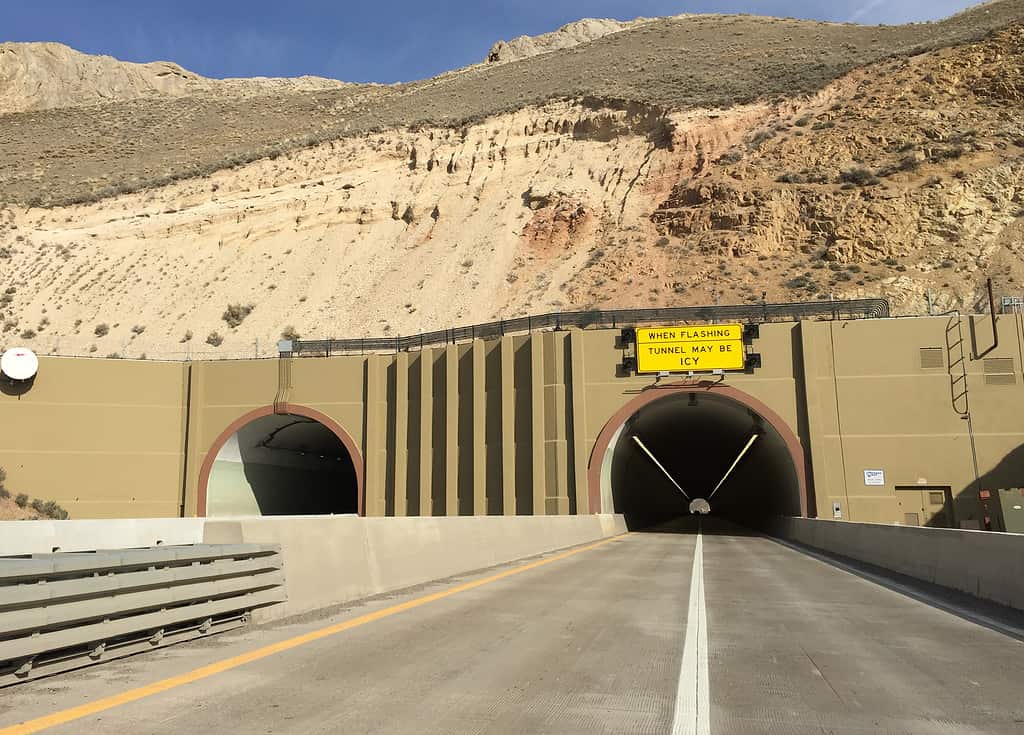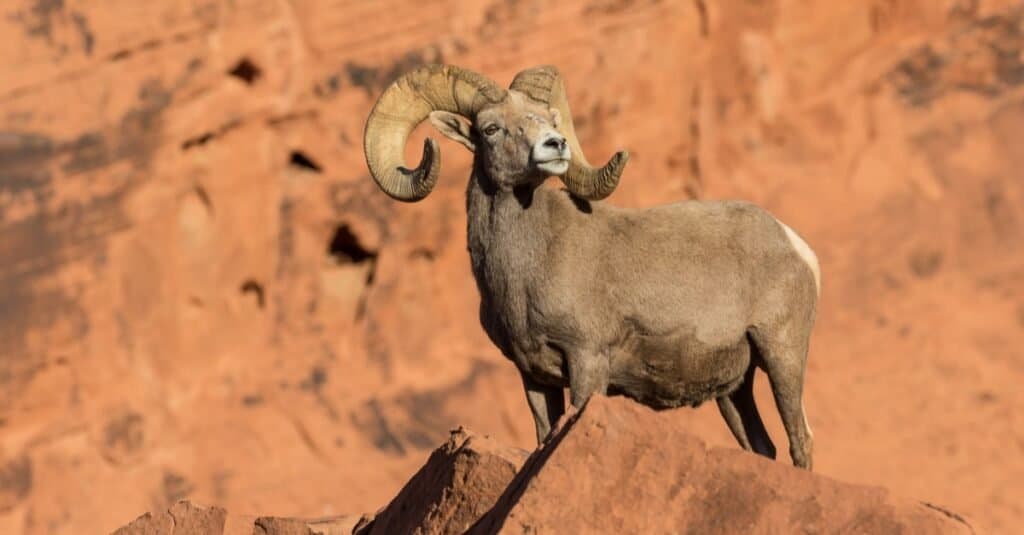
“Modern miracle,” as a term for the longest tunnel in Nevada, is not a couple of words to take lightly. In the world, only a handful or two of engineering feats transcend belief and what most engineers think we can accomplish in the modern era.
The Carlin Tunnel (in reality, a series of four tunnels or bores), is the longest tunnel and Nevada and every bit deserving of the “modern miracle” accolade. The history behind this incredible feat of engineering is just as incredible as the construction itself and is worth reading about.
The Carlin tunnel sits along a stretch of hot top otherwise known as Interstate 80. The real shame is that the tunnel is relatively obscure for those who either don’t live in the state of Nevada or who lack a general acquaintance with American history. However, this historical footnote is far more interesting than most and, the best part is, the tunnel is still there for all to visit and see.
The History of the Longest Tunnel in Nevada
The Southern Pacific Railroad is responsible for kicking off construction on the Carlin Tunnel. They broke ground in 1903, 120 years ago. Keep in mind, in those days, tunnel construction was primitive in comparison to the methods and technology of today.
One of the key aspects that makes the longest tunnel in Nevada such a historic landmark is its incorporation into the first Transcontinental Railroad. The reason the Carlin tunnel became a part of the Transcontinental Railroad is that the latter needed straightening.
Before the Carlin Tunnel addition, the Transcontinental Railroad ran parallel to the Humboldt River. A curve of that magnitude is detrimental to train speed and, since passenger trains are a part of the Transcontinental Railroad system, timeliness is important. Not only that, but cargo needs to arrive on time.
Construction of the Bores

The purpose of the Carlin Tunnel was to open an artery for truck-delivery goods to make it to markets in San Fransisco.
©Famartin, CC BY-SA 4.0, via Wikimedia Commons – License
The Carlin Tunnel is primarily a transportation portal for private and commercial traffic, with commercial traffic taking on a higher priority. The purpose of the Carlin Tunnel was to open an artery for truck-delivery goods to make it to markets in San Fransisco from specific areas in the Midwest.
The huge importance of the Carlin Tunnel is the same today as it was 75 to 100 years ago. If there is a wreck in the tunnel, safety, and cleanup are immense priorities. If the streamlined nature of the tunnel comes to a stop, it quickly becomes a national problem.
As aforementioned, construction on the first bore began in 1903 and was the primary responsibility of the Southern Pacific Railroad. The longest tunnel in Nevada didn’t come into being overnight. Western Pacific Railroad was in charge of the second bore.
It was necessary to essentially punch a hole through the Palisade Canyon and extend bridges over specific areas along the route. back then, there was no need for interstate travel and the impetus behind the construction was entirely for the railroad.
The two railroad lines that ultimately ran through the Carlin tunnels were competing railroad lines. That didn’t last, however, and Union Pacific now owns both of them. Originally, additional bores were blasted out and completed to accommodate Highway 40. The reason there are four tunnels today is the need to accommodate the new interstate system expansion in 1975.
1975 to Now
Originally, Route 40 was built to run through the first bores, where the old railroad tracks ran. Later, the remaining two bores were required for Interstate-80. Not only were the bores necessary for the interstate, but they were also necessary to accommodate the massive increase in traffic.
The cost for constructing the third and fourth bores was $8 million, an extravagant sum in those days which equals about $35 million today. In terms of history, this was the largest and most expensive project in Nevada at the time.
What Makes the Longest Tunnel in Nevada a Modern Miracle?
It’s hard to argue with the innovations that went into this tunnel at the time of its construction, and the continuing innovations well into the new millennium. Of course, tunneling in the Industrial Era was more of a “punch a hole and go” method than anything innovative. However, it’s the where and the consistent design upgrades that make the tunnel what it is today.
Drilling, surveying, blasting, mucking, and consolidation grounding were the name of the game back then. The idea was to straighten the railroad out and doing so meant tunneling through a mountain, manufacturing bridges, and laying tracks.
In 1908, the construction of the second bore connected Oakland, California to Salt Lake City, Utah. These old routes became interchangeable as the years passed, with the original railroad, including the Feather River Route connecting Salt Lake City and Oakland, becoming Route 40.
The tunnels are a modern miracle because of what the existence of the tunnel helped accomplish, along with the obstacles the tunnel has had to overcome. In 1908, a rock slide collapsed the original bore. Rock slides still happen today, though they were more common back then, especially after drilling through a mountain.
The cleanup effort was immediate and massive, showing the importance of this new transportation artery in the Midwest. A train derailment in 1938 killed 24 people and injured over 100. The derailment is one of history’s mysteries, as the cause was thought to be sabotage. However, no one then or now has ever uncovered evidence one way or the other.
Animals Near the Carlin Tunnel and Humboldt River

Over 12,000
bighorn sheep
are living in Nevada, some of which frequent the areas surrounding the Carlin Tunnel and the nearby towns.
©Tom Tietz/Shutterstock.com
The city of Carlin is home to the “gateway” to gold and the longest tunnel in Nevada. However, its outskirts are also home to several animals. Over 12,000 bighorn sheep are living in Nevada, some of which frequent the areas surrounding the Carlin Tunnel and the nearby towns.
There are also several endangered species in Nevada, including the yellow-billed cuckoo, red fox, North American wolverine, Carson wandering skipper, speckled dace, the mountain yellow-legged frog, and the bell’s vireo.
The Humboldt River is home to cutthroat trout, white bass, crappie, blue gill, and catfish. It wasn’t always that way. Originally, the Humboldt River was extremely muddy, thanks to several mudflows intersecting the river. Such an environment wasn’t hospitable to fish.
The Nevada Department of Wildlife, along with local communities, spent several years working on the mudflows and introducing the above-listed fish to the river. Now, the Humboldt River in this section of Nevada is rife with fish and fishing opportunities.
Coyotes, bobcats, weasels, whitetail deer, raccoons, mule deer, pronghorns, and black bears all inhabit the surrounding areas to one degree or another.
Where is The Southern Pacific Railroad Located on a Map?
The Central Pacific railway lines expanded towards the east, stretching across Nevada to Ogden, Utah, and also extended north through Oregon, ultimately reaching the city of Portland.
Here is The Southern Pacific Railroad on a map:
Final Thoughts on the Carlin Tunnel
The longest tunnel in Nevada is the beating heart of the railroad and roadway transportation hub in the Midwest and the western states. Carlin Tunnel is a modern miracle because of its historical association with the transcontinental railroad, its connection of two huge sections of the country, and the construction itself, through the side of a mountain and over the Humboldt River.
It’s also a lot of fun to drive through if you are ever passing through Nevada. Plus, there is a ghost town nearby, along with some of the prettiest sites in the state. You’ll also get an opportunity to pass over something that was constructed over a century ago, connecting the livelihoods of thousands of people with the Transcontinental Railroad.
The photo featured at the top of this post is © Famartin, CC BY-SA 4.0, via Wikimedia Commons – License / Original
Thank you for reading! Have some feedback for us? Contact the AZ Animals editorial team.






